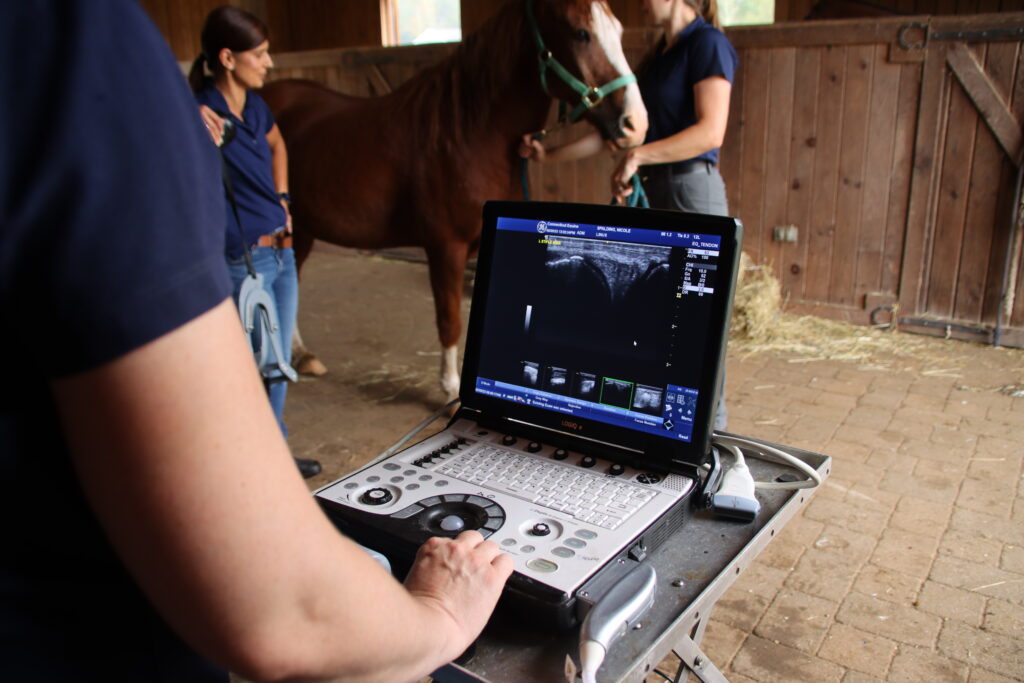Equine Lameness
Equine lameness is one of the most common veterinary complaints that we address at Connecticut Equine Clinic.
We strive to work closely with owners and their horses throughout eastern Connecticut to swiftly determine the cause and treatment for any lameness issues that we see. Lameness can be a puzzle that needs to be carefully pieced together to obtain optimum comfort and performance for your horse.
Lameness in the horse is traditionally defined as any abnormality of the horses’s gait.
Often the cause of the lameness is a source of pain which leads to a change in the way it moves. The severity of lameness can vary widely, from a horse not able to walk, to a head bob when trotting or even a subtle change in its’ performance such as not picking up a lead at the canter. Acknowledging these signs early and contacting us at the first sign of lameness can be very helpful in determining an appropriate treatment plan for your horse.

The American Association of Equine Practitioners (AAEP) developed a lameness scale to aid veterinarians and horse owners in communicating about cases:
Our job at Connecticut Equine Clinic is to identify the source of your horses’s lameness and work with you to determine an appropriate, effective course of treatment.
- Lameness is difficult to observe and is not consistently apparent
- Lameness is difficult to observe when horse is walking or trotting,but consistently apparent under certain circumstances – such as weight-carrying, circling, inclines, hard surfaces, etc.
- Lameness is consistently observable at a trot under all circumstances
- Lameness is obvious at a walk
- Lameness produces minimal weight bearing in motion and/or at rest or complete inability to move
There are many different reasons for a horse to show signs of lameness.
These can include the presence of an abscess, soft-tissue or bony injuries, trauma, arthritis, weakness or shoeing/trimming changes. When first addressing a new lameness case at Connecticut Equine Clinic, we gather a thorough history to understand the circumstances of the situation. A physical examination and palpation are performed and the horse’s gait is evaluated in hand, on the lunge and under saddle (if indicated). In cases of severe lameness, such as a broken leg, a horse may not be asked to move.
At Connecticut Equine Clinic we offer a wide array of diagnosis and therapeutic technologies to deal with lameness issues in the field and at the clinic.
We have digital x-ray machines which we use to obtain high quality digital images at the time of examination, rather than waiting for film to develop. Ultrasound examinations can also be performed in the field to evaluate soft-tissue structures as well as joints and wounds. In some cases, ultrasound guided injections are performed (example: sacroiliac injection).
At Connecticut Equine Clinic we are able to complete a thorough evaluation to assess the source of lameness and course of treatment.
Diagnostic modalities include:
Treatments for lameness may include:
Preventing lameness is always preferable to treating it afterward, but this is not always possible.
Connecticut Equine Clinic will partner with you to help keep your horse healthy and performing to the best of its ability. With over 30 years of experience in the area of lameness, we are able to successfully diagnose and recommend appropriate treatment for our lameness patients, which range from seasoned performance horses to backyard companions.
Since 1987, Connecticut Equine Clinic has been the obvious choice for discerning horse owners in eastern Connecticut and beyond.
Whether the need is for a challenging lameness work-up or simply prompt and thorough care for your horse’s everyday needs, your horse’s wellness will be our top priority.
For the best equine lameness care and treatment in the region, contact us at (860) 742-1580.
Contact Us